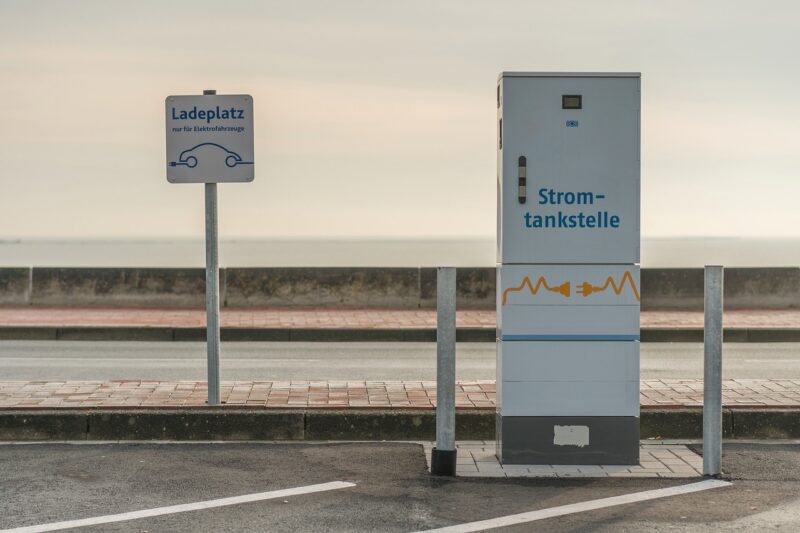How the Electric Vehicle Boom Is Impacting the Automotive Supply Chain
November 12, 2024

The surge in electric vehicle (EV) adoption over the past decade is reshaping the automotive landscape. As more consumers lean towards sustainable alternatives, automakers and supply chains are evolving to meet the burgeoning demand for electric mobility. In this article, we will delve deep into how the electric vehicle boom is transforming the automotive supply chain—from raw materials to manufacturing processes and distribution networks.
1. The Shift from Internal Combustion Engine (ICE) to Electric Vehicles (EVs)
The automotive industry has historically relied on internal combustion engines (ICE), but environmental concerns and government regulations are driving a significant shift towards electric vehicles. According to the International Energy Agency (IEA), global electric car sales exceeded 6.6 million in 2021, a 108% increase from 2020.
Several factors are propelling this shift:
- Environmental Regulations: Stricter emissions regulations worldwide are forcing manufacturers to invest in EV technology, minimizing their carbon footprints.
- Consumer Demand: A growing number of consumers are prioritizing sustainability in their purchases, leading to increased demand for electric vehicles.
- Technological Advancements: Advances in battery technology are making EVs more efficient and affordable, further driving their adoption.
This paradigm shift has significant implications for the automotive supply chain, which must adapt to new processes, materials, and technologies.
2. Redefining Raw Material Sourcing
Electric vehicles require different materials than traditional gasoline-powered vehicles. The shift to electric means increased demand for metals key to battery production, particularly:
- Lithium: Used in lithium-ion batteries, the demand for lithium has skyrocketed, resulting in a scramble for lithium mining operations worldwide.
- Cobalt: Another crucial component of EV batteries, cobalt mining is often linked to ethical sourcing challenges, pushing manufacturers to seek alternative sources or develop cobalt-free batteries.
- Nickel: Essential for increasing battery capacity, nickel demand has also increased, leading to competition for resources globally.
As the industry evolves, automakers are exploring partnerships with mining companies and investing in sustainable practices to secure these necessary materials while addressing environmental concerns.
3. Innovations in Manufacturing Processes
Manufacturing electric vehicles is not just about assembling new parts; it involves rethinking entire processes. Here are the key areas influencing manufacturing due to the EV boom:
- Modular Production Lines: Flexible and modular designs allow manufacturers to adapt to varying production rates of electric vehicles, efficiently managing supply chain disruptions.
- Automation and Robotics: Many manufacturers are increasingly leveraging automation to improve precision and reduce costs in battery and vehicle assembly operations.
- Sustainability Initiatives: Manufacturers are prioritizing sustainable practices, such as recycling materials and using renewable energy sources within their factories to lessen environmental impact.
These changes demand a highly adaptable workforce that can work efficiently with new technologies, reshaping workforce training and skill development across the board.
4. Evolving Distribution Networks
The logistics and distribution of electric vehicles differ largely from traditional automotive supply chains. As electric vehicle adoption grows, distributing these vehicles efficiently is vital. Changes include:
- Increased Collaboration: Close collaboration among automakers, suppliers, and logistics providers is essential for efficient EV distribution. Information sharing can alleviate supply chain volatility and enhance delivery accuracy.
- Last-Mile Delivery: The rise of e-commerce has altered delivery expectations, necessitating improvements in last-mile logistics to meet consumer demands for timely EV purchases.
- Charging Infrastructure Development: The need for a robust charging infrastructure is paramount. Partnerships with energy companies, local governments, and charging station providers facilitate smoother EV distribution and enhance consumer confidence.
By addressing logistics challenges, EV manufacturers can ensure efficient delivery while meeting increasing consumer demands.
5. Impact on Traditional Automotive Suppliers
The transition to electric vehicles heavily affects traditional automotive suppliers, prompting them to adapt or risk obsolescence. Key impacts include:
- Diversification of Offerings: Traditional suppliers are expanding their product lines, shifting focus from ICE components to EV components like battery cells, electric drivetrains, and advanced electronic systems.
- Investment in R&D: Suppliers are investing significantly in research and development to innovate within the EV domain, leading to new automotive technologies and products that align with current demands.
- Collaborative Ventures: Many suppliers are collaborating with technology companies to enhance their capabilities in producing advanced materials and components for electric vehicles, fostering growth opportunities.
This trend emphasizes the necessity for existing suppliers to remain competitive by evolving their businesses in line with the industry’s changing landscape.
6. Future Outlook
Looking ahead, the electric vehicle boom is expected to continue reshaping the automotive supply chain in profound ways. Key considerations for the future include:
- Sustainability Emphasis: As the world moves towards more sustainable practices, the automotive supply chain will increasingly prioritize eco-friendly operations, from raw material sourcing to production methods.
- Integration of Advanced Technologies: The incorporation of technologies like AI, IoT, and blockchain in supply chain management can lead to more efficient production and inventory management for EVs.
- Global Market Dynamics: Shifting economic powers and emerging markets will play critical roles in shaping supply chain strategies, with an increasing emphasis on localized production and supply networks.
As the automotive industry positions itself for the future, stakeholders across the supply chain must remain agile and responsive to not only fulfill current demands but also anticipate shifts to maintain long-term viability.
Conclusion
The electric vehicle boom is not just a trend but a pivotal moment for the automotive industry. It is fundamentally reshaping the supply chain, requiring new strategies and innovation. From sourcing essential materials to revamping manufacturing processes and adapting distribution channels, EVs represent a momentous shift that will influence the automotive sector for years to come.
Industry players must embrace this transformation, recognizing the opportunities it presents to enhance sustainability, efficiency, and collaboration within the automotive supply chain and fortify their positions in the market. By taking proactive steps, the automotive industry can navigate this transition successfully and capitalize on the growing electric vehicle movement.





